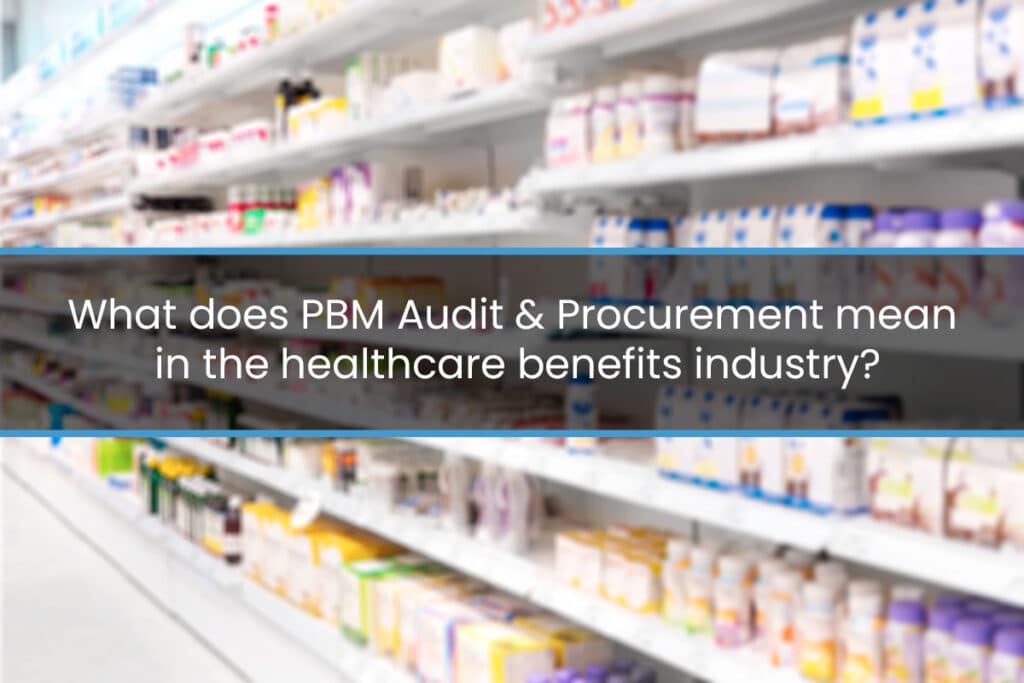PBM Audit & Procurement is a process used in the healthcare benefits industry to ensure that the pharmacy benefit management (PBM) services provided to employers that sponsor a health plan are accurately priced. PBM’s are responsible for managing the purchasing, dispensing, and reimbursement of prescription drugs for their clients. These companies often have contracts with pharmacies, manufacturers, and other healthcare providers to negotiate prices and terms for the purchase of prescription drugs. PBM’s often are owned by Health Insurers and are big profit centers in these relationships. Think of the biggest PBM’s that are out there and who owns them.
The PBM Audit & Procurement process involves evaluating an employer or plan sponsor’s PBM contract to ensure that they are in line with their goals and objectives. This may include reviewing the pricing and terms of the contracts, as well as assessing the performance of the PBM in meeting the needs of the health plan. Fiduciaries need to be aware that PBM contracts need to be reviewed, should not be held hostage by the medical insurance carrier and will reveal valuable information regarding how prescription claims will be handled.
One important aspect of a PBM Audit & Procurement is the identification of cost savings opportunities. This may involve analyzing the utilization of certain drugs, negotiating lower prices with manufacturers or pharmacies, or finding alternative sources for prescription drugs. By identifying cost savings opportunities, plan sponsors can potentially reduce their overall drug costs and improve their financial performance. This can be by very large amounts. In some cases $100,000’s or with the price of some medications, well over $1,000,000!
Another key component of PBM Audit & Procurement is ensuring compliance with regulatory requirements. Per the Consolidated Appropriations Act, all plan sponsors are required to submit to CMS certain prescription drug reporting on an annual basis. These figures must represent and show the following information:
- Premiums & Rebates
- Total healthcare spend
- Top 50 brand drugs most frequently dispensed
- Annual amount spent on top 50 most costly prescription drugs by total plan/coverage spend
Failure to do so will result in stiff penalties and enforcement is currently in effect.
Part of this requirement from the DOL is to ensure that the US government better understands the games that are being played behind the scenes leading to unfair business practices that impact not only the plan themselves but also the member. These unfair practices lead to inflated pricing as well as members not filling their prescriptions or taking less than the recommended dosage in order to afford month-over-month medication costs. One of the biggest issues that are leading to investigation and monitoring by the federal government is a concern around prescription drug rebates. Rebates or a refund of money due back from overpayment or as some experts would say, incentives to prescribe certain drugs for a return of funds paid. The problem is, in many instances, the employer and employee are paying for the drug and in turn, the health plan administrator and PBM are keeping a portion of those rebates as profit, or not passing those rebates back altogether. This results in 100’s of millions of dollars that don’t end up back at the employer and in turn leads to rising costs for both employer and employee.
PBM Audits also involves monitoring the performance of the PBM. This includes tracking the accuracy and timeliness of the PBM’s drug pricing and reimbursement processes, as well as assessing the overall quality of the service provided by the PBM. By continuously monitoring the performance of the PBM, plan sponsors should come to expect great service, but also, paying the right price.
Overall, acting as a prudent fiduciary regarding PBM spend, and management is an important process for any plan sponsor which helps to ensure that they are receiving high-quality, cost-effective pharmacy benefit management services. By carefully evaluating contracts, identifying cost savings opportunities, complying with regulatory requirements, and monitoring the performance of the PBM, those diligent plan sponsors can better manage their drug costs and improve the overall quality of care.




